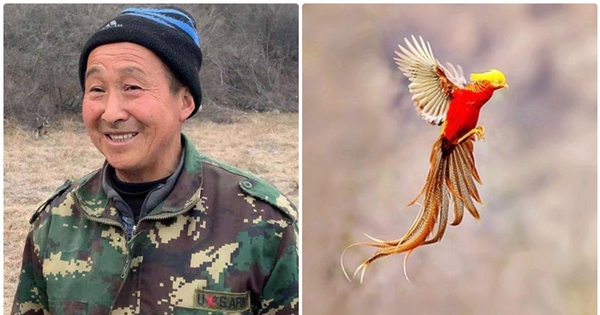The sudden appearance of the “golden phoenix”
In 1983, Quach Ton Toa, 29 years old, from Shanxi, China, was born into a family of forest keepers. At the age of 29, Quach Ton Toa did not pursue the excitement of the city but chose to follow his parents’ footsteps as a companion to wild animals and trees. By that point, he had been working as a forest ranger for eight years.
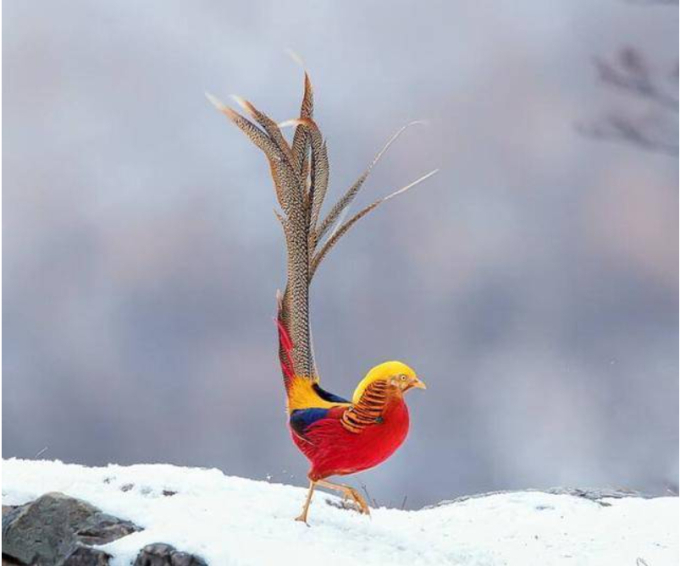
One day, a “golden phoenix” suddenly appeared near Quach Ton Toa’s house. (Photo: Sohu)
One day, as usual, Quach Ton Toa was walking around the forest when he suddenly heard a strange noise coming from behind his house. This noise only happened occasionally, the man thought that perhaps a small animal was stalking him. Thinking of this, Quach Ton Toa quickly ran around the back of the house and gently pushed the tree branch aside to scare the animal. Unexpectedly, the scene before his eyes made him extremely surprised. This was the first time in his life he had seen such a strange bird.
The bird that Quach Ton Toa saw had a set of colorful feathers . When the sunlight shone on it, the feathers reflected light, making his eyes dazzled. After calming down, the man suddenly remembered the “golden phoenix” that his father often mentioned but had never seen before, so he was very happy. Quach Ton Toa immediately ran into the house to get some grain to feed the bird. The “golden phoenix” seemed to understand that he would not harm it, so it confidently rushed in to eat. Even before leaving, it turned back to look at the young man and made a strange cry.
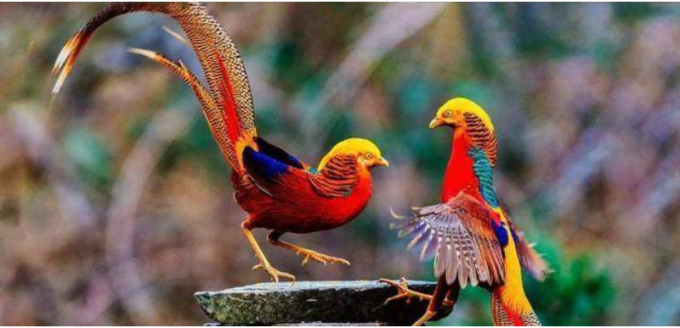
Some time later, the “golden phoenixes” came to the man’s house to get more food. (Photo: Sohu)
Fast forward 6 years, and the “golden phoenix” not only came alone but also called its fellow humans to come and eat food. In Quach Ton Toa’s memories, every time they visited his house there were at least 10 of them.
The unexpected origins of the “golden phoenixes”
In 1989, Quach Ton Toa showed off photos of “golden phoenix” birds with friends when something unexpected happened. It is unclear how information about these “phoenixes” reached zoological experts. A group of experts immediately went to his house. At this time, the true identity of the “golden phoenixes” was determined. They turned out to be yellow 7 pheasants. A nationally protected wild animal in China. After learning about their origin, Quach Ton Toa was even more determined to take better care of them to preserve them.
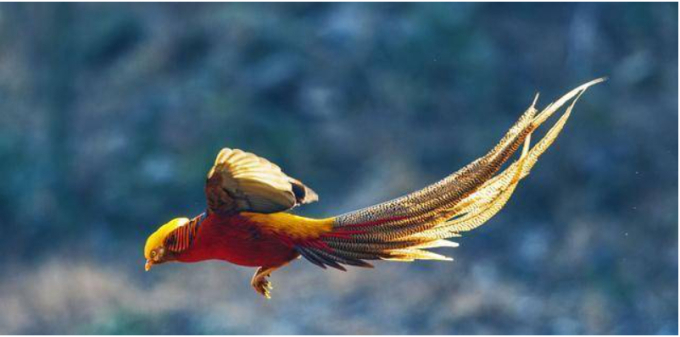
Turns out, those “golden phoenixes” are rare yellow 7-colored pheasants. (Photo: Sohu)
The 7-yellow pheasant is a species of bird in the Phasianidae family. In Vietnam, people often call it “Japanese pheasant” but actually this species of pheasant comes from Western China. Small numbers of pheasants are also found in Ireland, Northern Scandinavia, the Northern and Southern Iberian Peninsula, Italy, and Southern Greece.
For a long time, the 7-colored yellow pheasant has been compared to a “phoenix” and was chosen as a pet because it has colorful plumage, with a shiny yellow patch covering from the top of the head to the base of the tail; Particularly, the neck and wings are interwoven with many characteristic compartments with black, yellow, purple feathers: while the breast and abdomen are completely covered with bright red feathers. Yellow 7 pheasants, thanks to their colorful fur, are considered the most beautiful pheasant breed compared to other pheasant breeds in Asia and are also very valuable. Asians often believe that yellow pheasants can bring luck because of their special feather color. Depending on the age, color, and shape of each bird, the price is different.
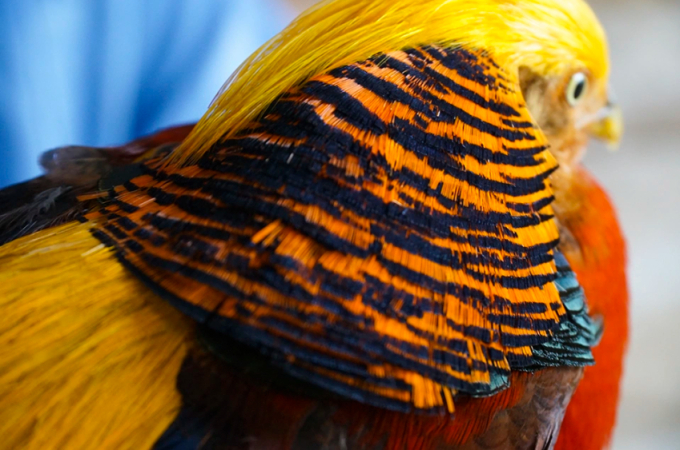
The 7-yellow pheasant is likened to a “phoenix” because of its beautiful plumage. (Photo: Sohu)
The seven-colored yellow pheasant has a body length from 80cm to 100cm. The male bird’s tail feathers are usually 70cm to 100cm long on average. They are birds that can fly very well but like to move around every day and forage on the ground. Only when sleeping do they perch on tree branches.
They often live concentrated at an altitude of 2,500 meters above sea level. The area where they live is a place with many shrubs and bud forests. Their food in the wild is mainly leaves, young shoots, and bamboo shoots. They also eat insects and many small animals…
Currently, Mr. Quach Toa Ton has built a sanctuary specifically for his 7 yellow pheasants to serve visitors and tourists. And thanks to these “golden phoenixes”, his family’s income also increased significantly.
